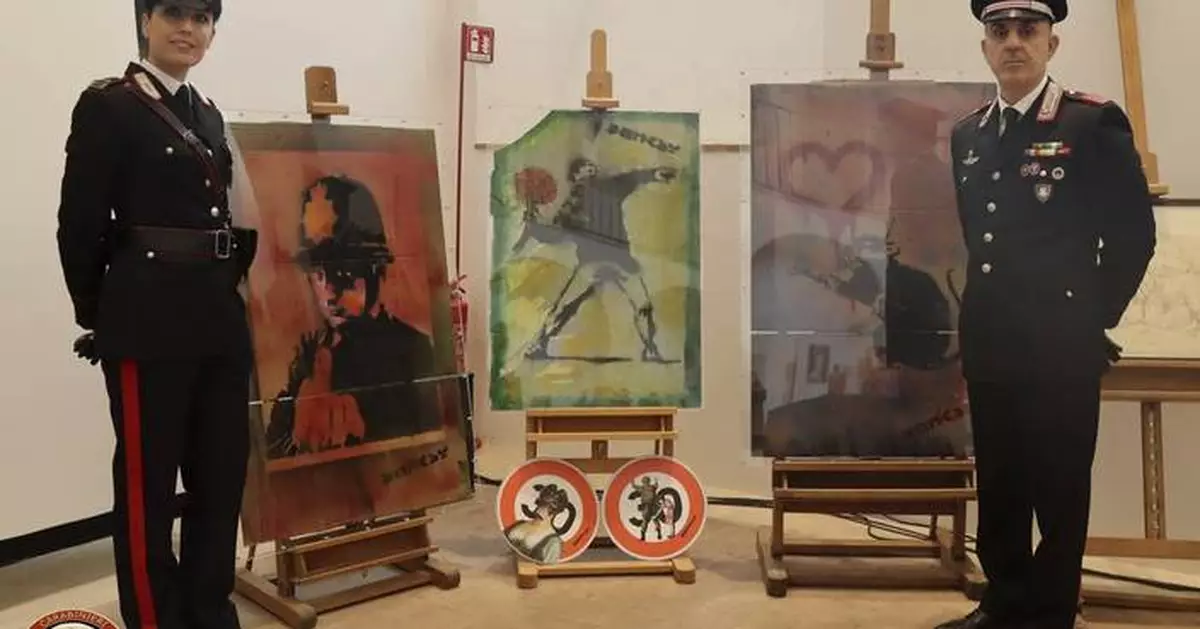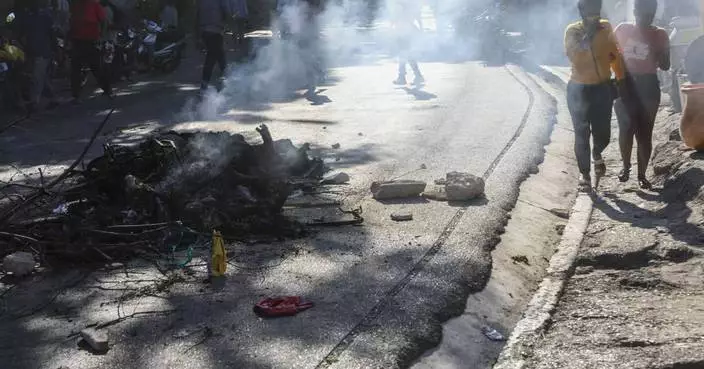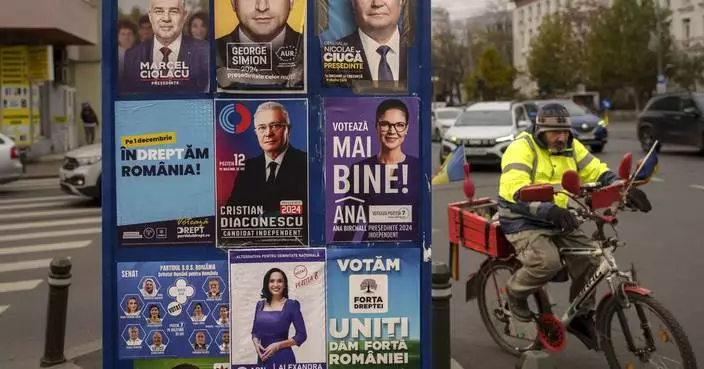ROME (AP) — Italian authorities say a network of European art forgers who painted fake Warhols, Banksys and Picassos and then tried to sell them to unsuspecting buyers with the help of complicit auction houses has been dismantled.
Thirty-eight people have been placed under investigation, including six in Spain, France and Belgium. Italian authorities say the network could have done 200 million euros ($212 million) in economic damage by flooding the art market with fake works.
Italy’s culture ministry said Monday the seizures in Italy, France, Spain and Belgium netted 2,100 fake works attributed to more than 30 famed artists, including Andy Warhol, Amedeo Modigliani, Banksy, Pablo Picasso, Joan Mirò, Francis Bacon, Wassily Kandinsky, Henry Moore and Gustav Klimt.
The operation uncovered a network of forgers in Spain, France and Belgium who produced the works, said Eurojust, the European Union agency for judicial cooperation. Fake Warhols and Banksys were the most commonly forged and the fakes were exhibited at shows in Mestre and Cortona, Italy, with a catalogue published, the authorities said.
Eurojust said the network was able to use complicit auction houses in Italy that issued forged certificates and stamps of authenticity, some 500 of which were also seized.
The investigation began in March 2023 when Italian authorities discovered 200 fakes during the search of the home of a Pisa businessman that prompted them to monitor e-commerce sites of auction houses to see if others were involved in the network.
Those arrested are accused of conspiracy to forge and deal in contemporary art, Eurojust said.
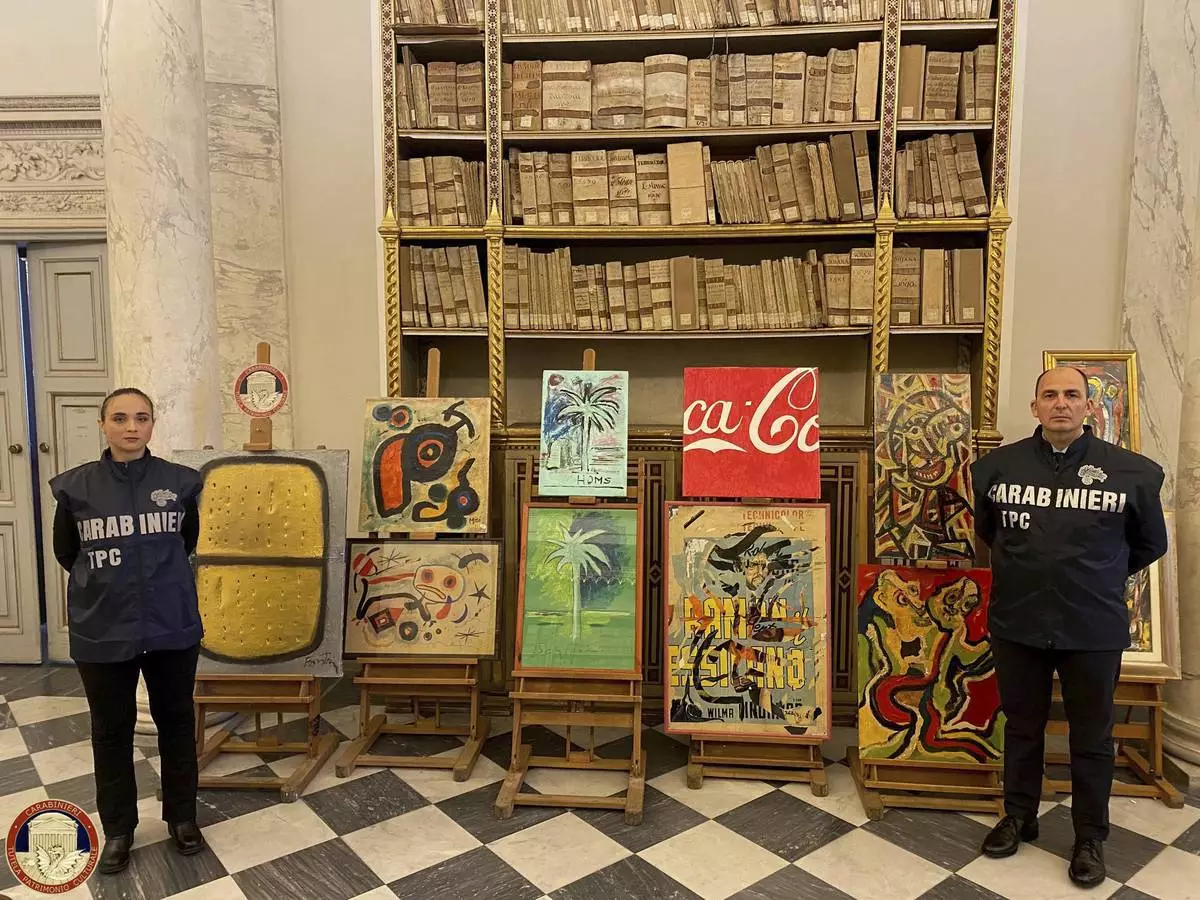
Fake modern and contemporary artworks that were sized by police are show in Rome in this handout image provided by the Italian Culture Ministry on Monday, Nov. 11, 2024. (AP Photo/Italian Culture Ministry, HOGP)

A fake Amedeo Modigliano drawing that was sized by police is show in Rome in this handout image provided by the Italian Culture Ministry on Tuesday, Oct. 15, 2024. (AP Photo/Italian Culture Ministry, HOGP)
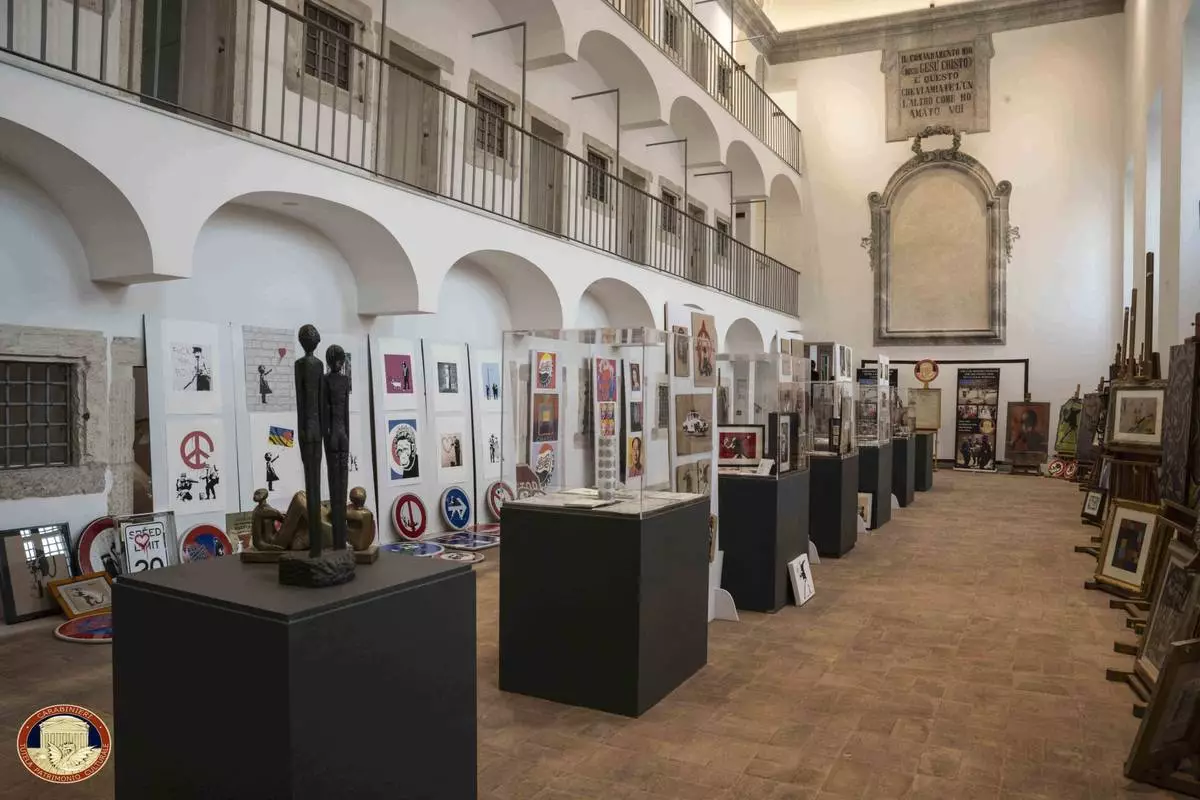
Fake modern and contemporary artworks that were sized by police are show in Rome in this handout image provided by the Italian Culture Ministry on Tuesday, Oct. 15, 2024. (AP Photo/Italian Culture Ministry, HOGP)
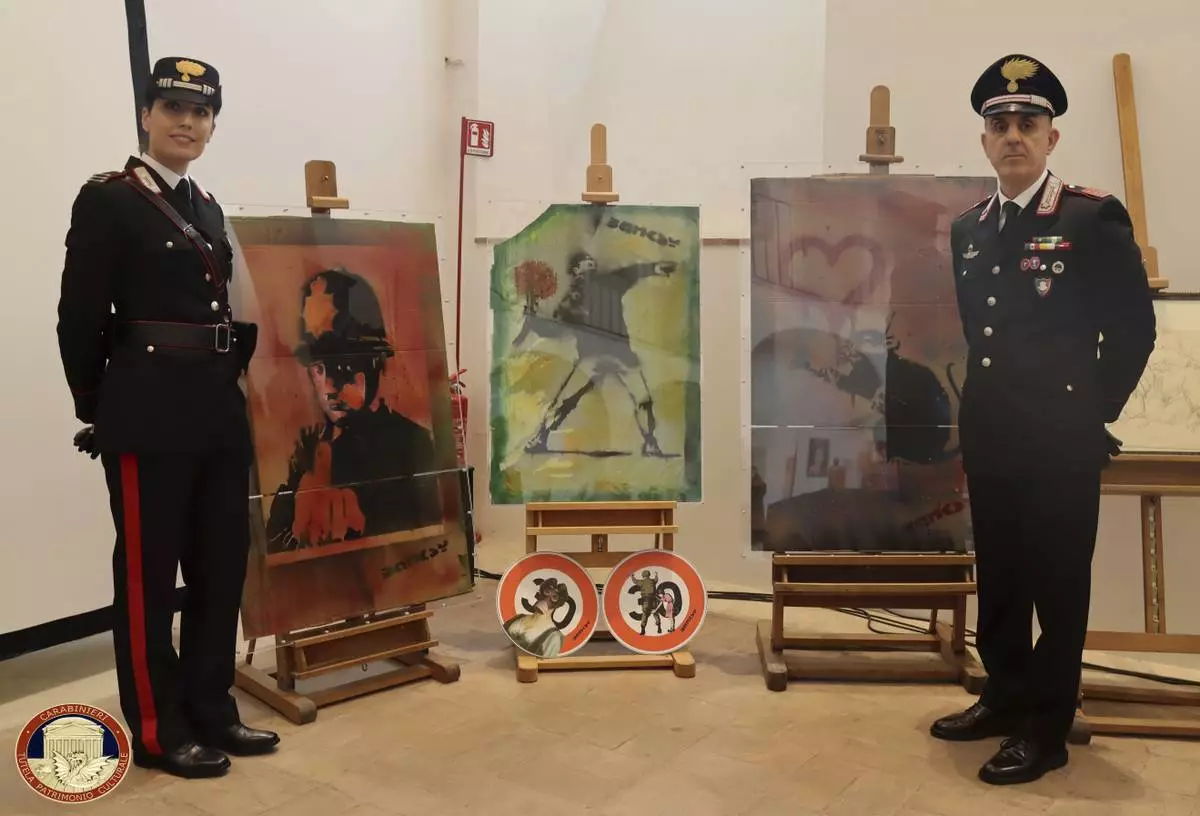
Fake Banksy artworks that were sized by police are show in Rome in this handout image provided by the Italian Culture Ministry on Tuesday, Oct. 15, 2024. (AP Photo/Italian Culture Ministry, HOGP)
SADO, Japan (AP) — Japan held a memorial ceremony on Sunday near the Sado Island Gold Mines despite a last-minute boycott of the event by South Korea that highlighted tensions between the neighbors over the issue of Korean forced laborers at the site before and during World War II.
South Korea’s absence at Sunday’s memorial, to which Seoul government officials and Korean victims’ families were invited, is a major setback in the rapidly improving ties between the two countries, which since last year have set aside their historical disputes to prioritize U.S.-led security cooperation.
The Sado mines were listed in July as a UNESCO World Heritage site after Japan moved past years of disputes with South Korea and reluctantly acknowledged the mines’ dark history, promising to hold an annual memorial service for all victims, including hundreds of Koreans who were mobilized to work in the mines.
On Saturday, South Korea announced it would not attend the event, saying it was impossible to settle unspecified disagreements between the two governments in time.
Families of Korean victims of the mine accidents were expected to separately hold their own ceremony near the mine at a later date.
Masashi Mizobuchi, an assistant press secretary in Japan’s Foreign Ministry, said Japan has been in communication with Seoul and called the South Korean decision “disappointing.”
The ceremony was held as planned on Sunday at a facility near the mines, where more than 20 seats for Korean attendees remained vacant.
The 16th-century mines on the island of Sado, off Japan’s north-central coast, operated for nearly 400 years before closing in 1989 and were once the world’s largest gold producer.
Historians say about 1,500 Koreans were mobilized to Sado as part of Japan’s use of hundreds of thousands of Korean laborers, including those forcibly brought from the Korean Peninsula, at Japanese mines and factories to make up for labor shortages because most working-age Japanese men had been sent to battlefronts across Asia and the Pacific.
Japan’s government has maintained that all wartime compensation issues between the two countries were resolved under a 1965 normalization treaty.
South Korea had long opposed the listing of the site as World Heritage on the grounds that the Korean forced laborers, despite their key role in the wartime mine production, were missing from the exhibition. Seoul's backing for Sado came as South Korean President Yoon Suk Yeol prioritized improving relations with Japan.
The Japanese government said Sunday’s ceremony was to pay tribute to “all workers” who died at the mines, but would not spell out inclusion of Korean laborers — part of what critics call a persistent policy of whitewashing Japan’s history of sexual and labor exploitation before and during the war.
Preparation for the event by local organizers remained unclear until the last minute, which was seen as a sign of Japan’s reluctance to face its wartime brutality.
Japan’s government said on Friday that Akiko Ikuina — a parliamentary vice minister who reportedly visited Tokyo’s controversial Yasukuni Shrine in August 2022, weeks after she was elected as a lawmaker — would attend the ceremony. Japan’s neighbors view Yasukuni, which commemorates 2.5 million war dead including war criminals, as a symbol of Japan's past militarism.
Ikuina belonged to a Japanese ruling party faction of former Prime Minister Shinzo Abe, who led the whitewashing of Japan's wartime atrocities in the 2010s during his leadership.
For instance, Japan says the terms “sex slavery” and “forced labor” are inaccurate and insists on the use of highly euphemistic terms such as “comfort women” and “civilian workers” instead.
South Korean Foreign Minister Cho Tae-yul said Saturday that Ikuina’s Yasukuni visit was an issue of contention between the countries’ diplomats.
“That issue and various other disagreements between diplomatic officials remain unresolved, and with only a few hours remaining until the event, we concluded that there wasn’t sufficient time to resolve these differences,” Cho said in an interview with MBN television.
Some South Koreans had criticized Yoon’s government for supporting the event without securing a clear Japanese commitment to highlight the plight of Korean laborers. There were also complaints over South Korea agreeing to pay for the travel expenses of Korean victims’ family members to Sado.
Kim reported from Seoul, South Korea.
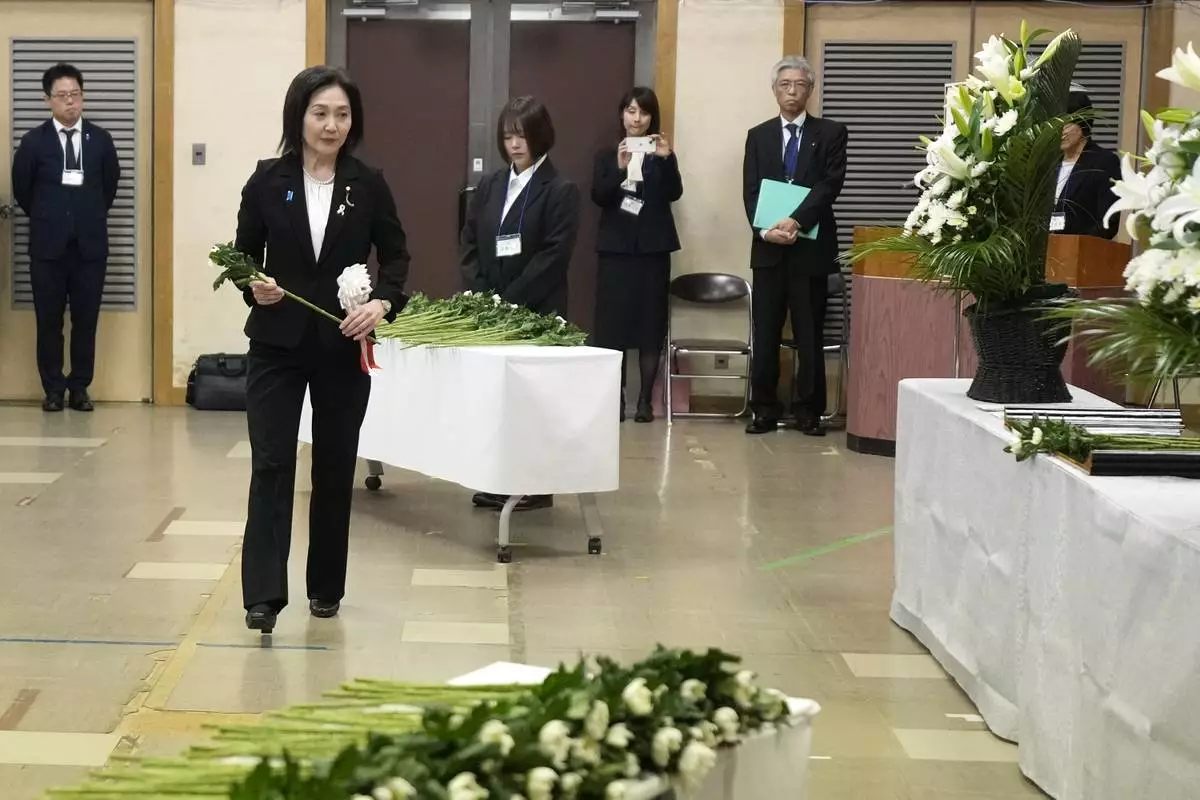
Akiko Ikuina, Parliamentary Vice-Minister for Foreign Affairs, offer a flower on behalf of the government during a memorial ceremony for the Sado Island Gold Mine in Sado, Niigata prefecture, Japan, Sunday, Nov. 24, 2024. (AP Photo/Eugene Hoshiko)
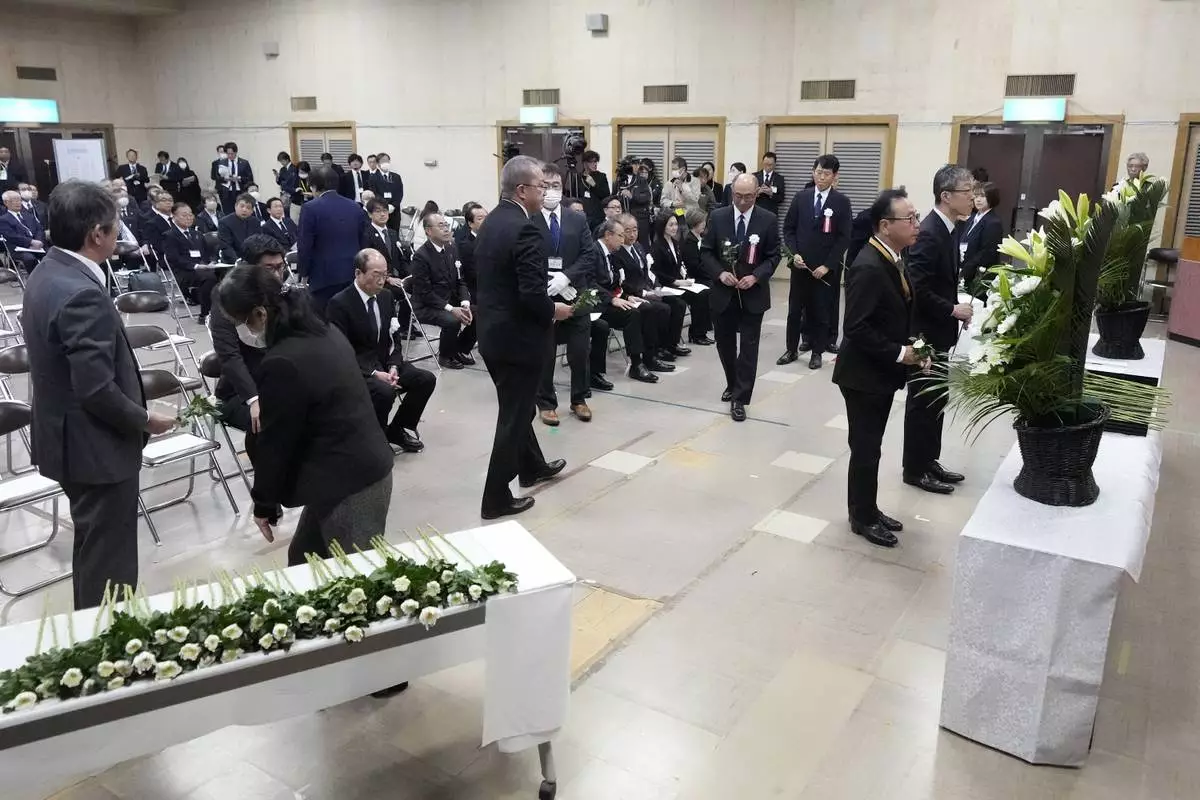
Guests offer a flower during a memorial ceremony for the Sado Island Gold Mine in Sado, Niigata prefecture, Japan, as several seats reserved for South Korean guests remained empty Sunday, Nov. 24, 2024. (AP Photo/Eugene Hoshiko)
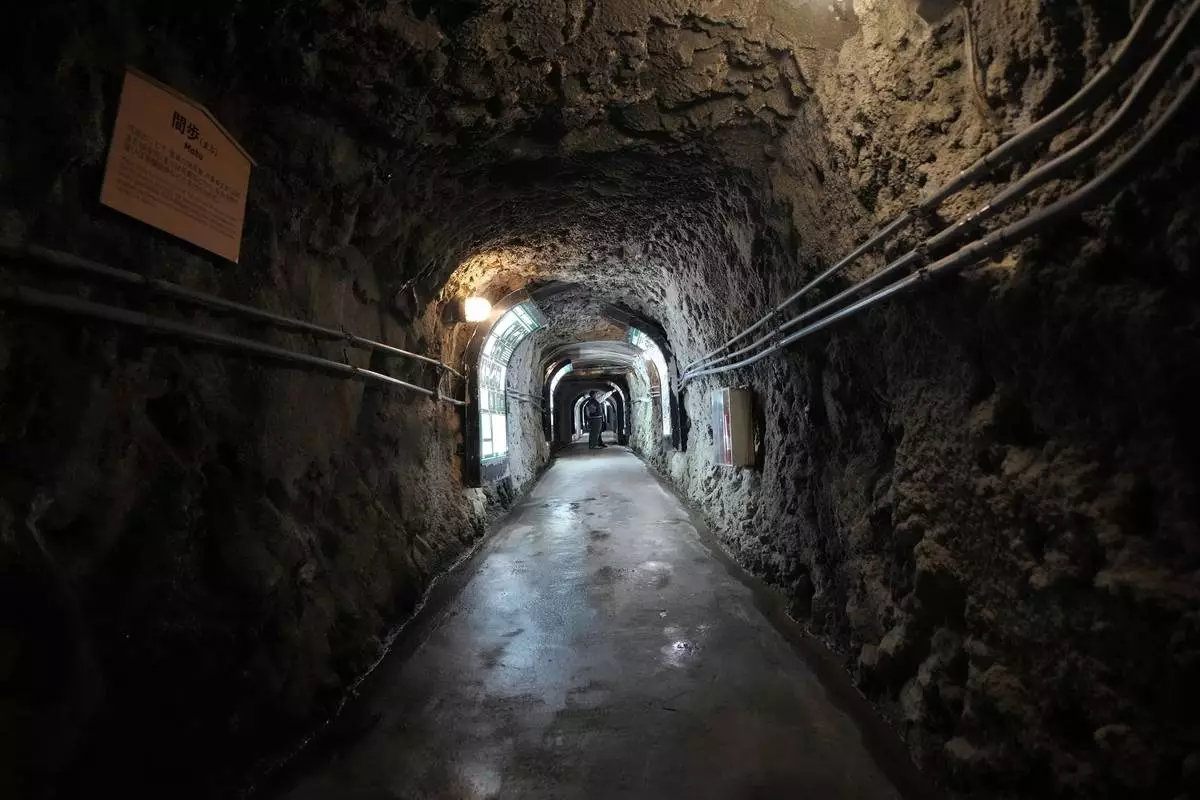
Visitors walk though a tunnel at Sado Kinzan Gold Mine historic site in Sado, Niigata prefecture, Japan, Saturday, Nov. 23, 2024. (AP Photo/Eugene Hoshiko)
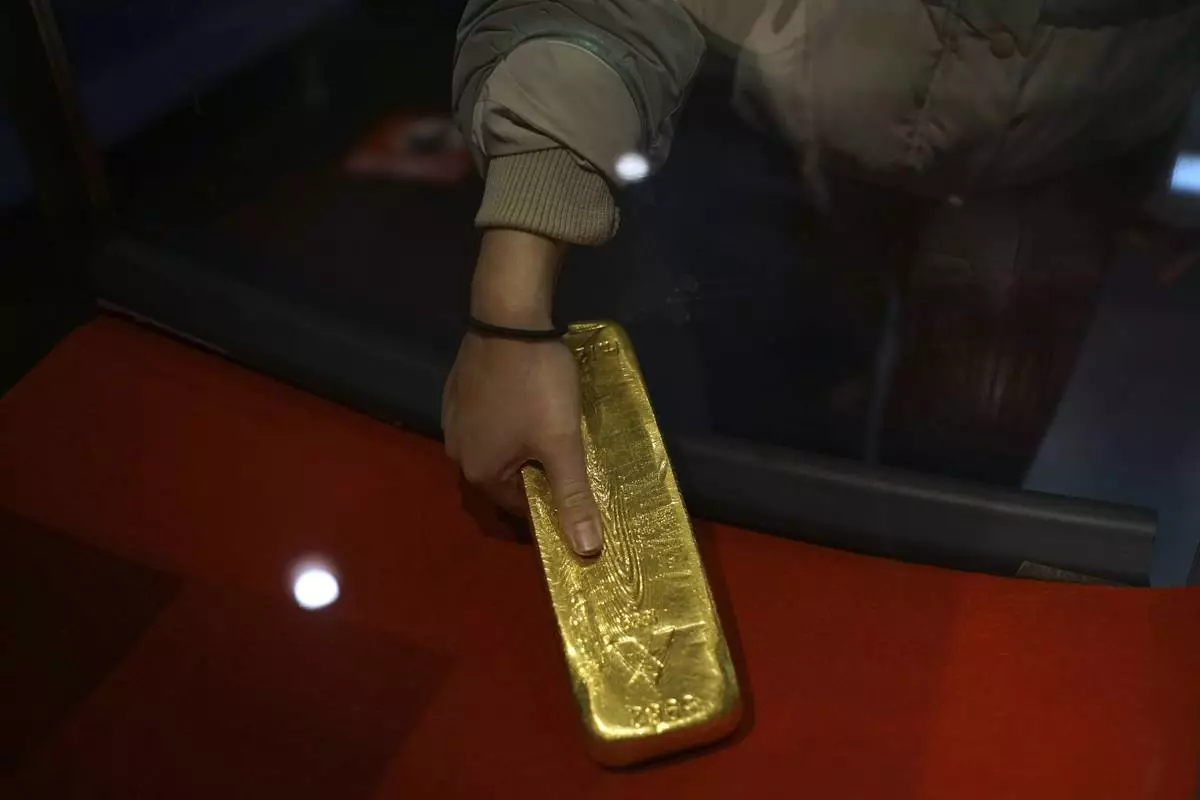
A visitor tries to pick up a gold bar at Sado Kinzan Gold Mine historic site in Sado, Niigata prefecture, Japan, Saturday, Nov. 23, 2024. (AP Photo/Eugene Hoshiko)
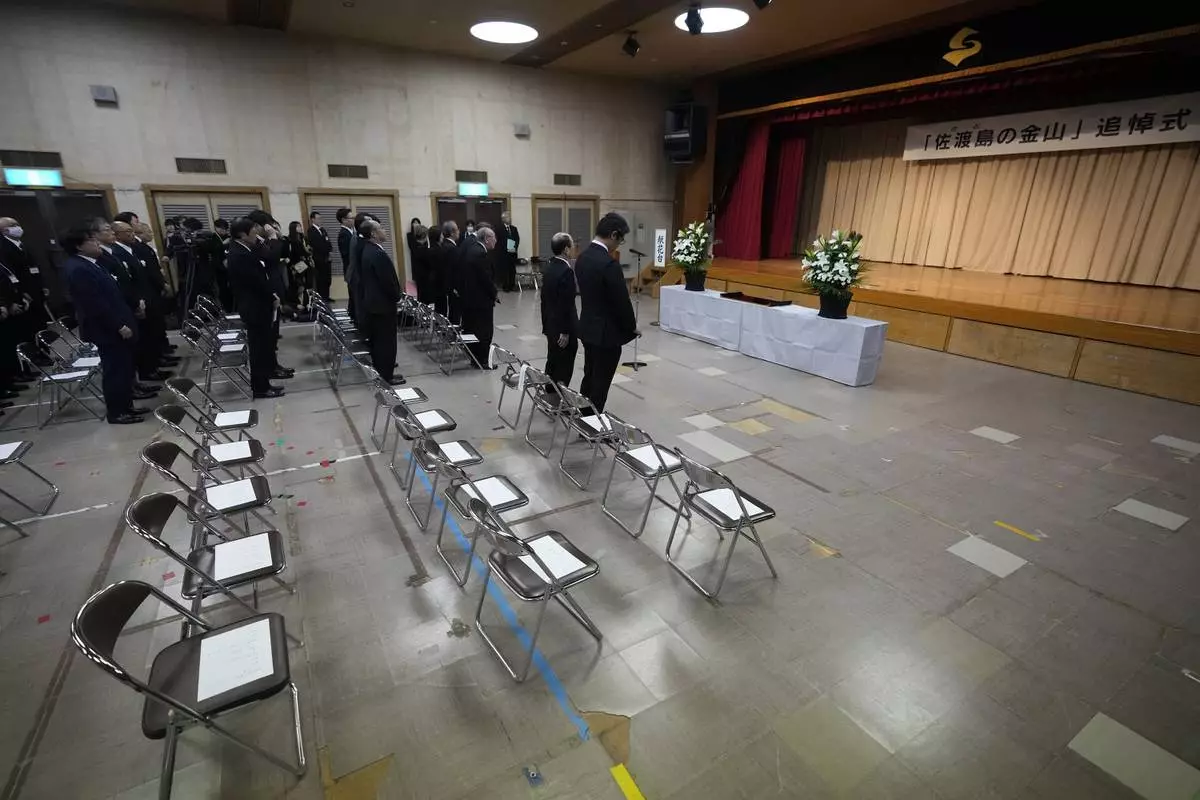
Guests offer a moment of silence during a memorial ceremony for the Sado Island Gold Mine in Sado, Niigata prefecture, Japan, Sunday, Nov. 24, 2024. (AP Photo/Eugene Hoshiko)
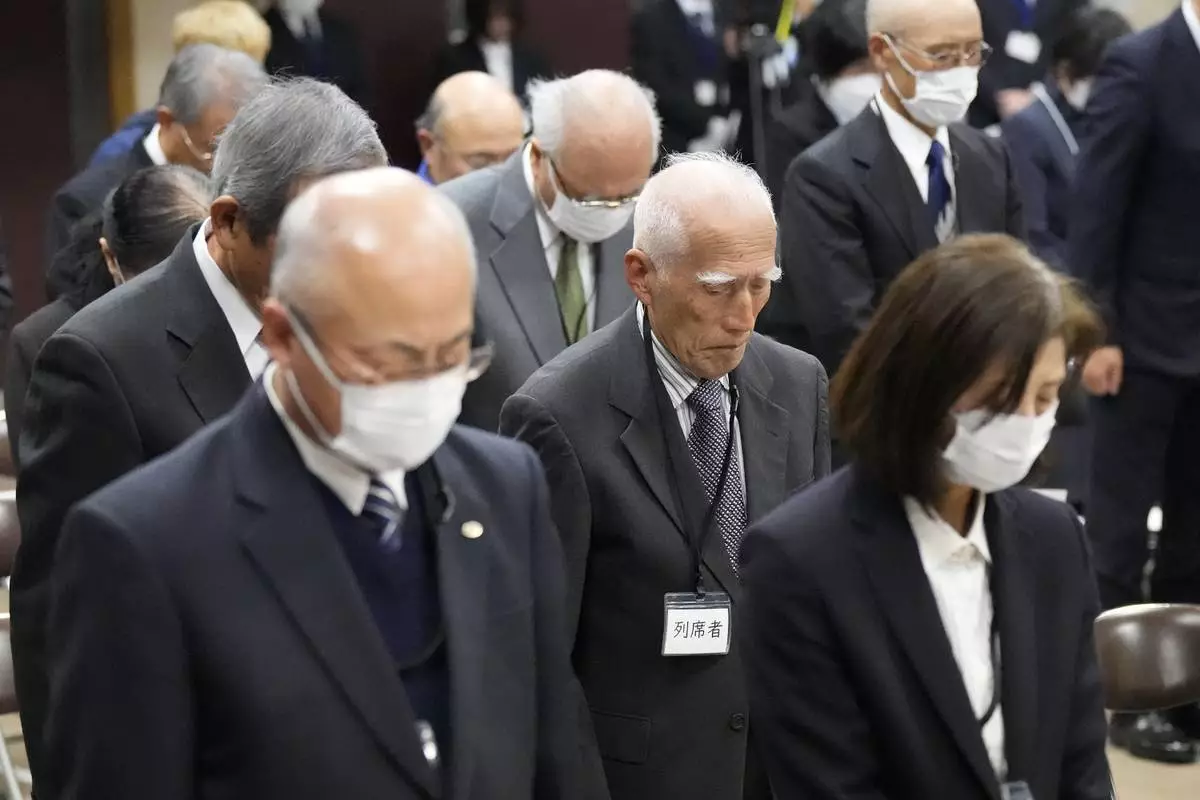
Guests offer a moment of silence during a memorial ceremony for the Sado Island Gold Mine in Sado, Niigata prefecture, Japan, Sunday, Nov. 24, 2024. (AP Photo/Eugene Hoshiko)
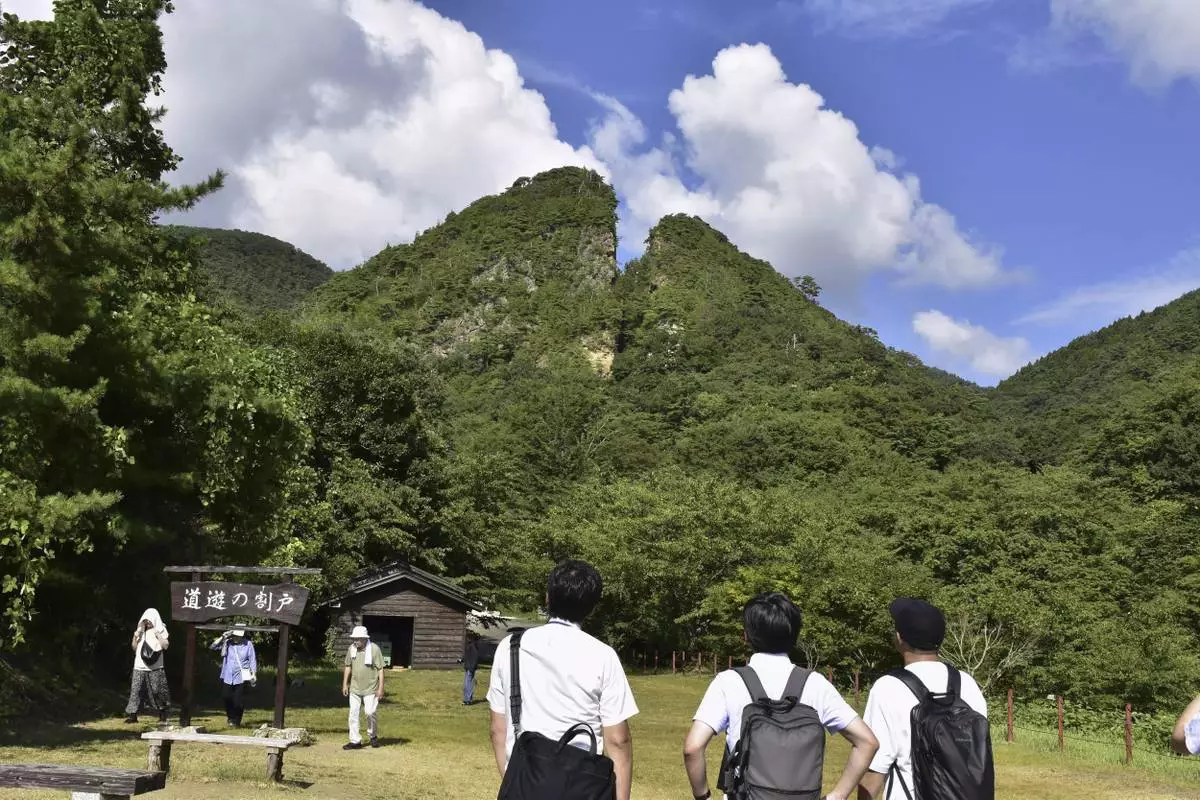
People visit remains of a Sado gold mine are seen on Sado Island, northern Japan, on Aug. 26, 2024. (Yasufumi Fujita/Kyodo News via AP)
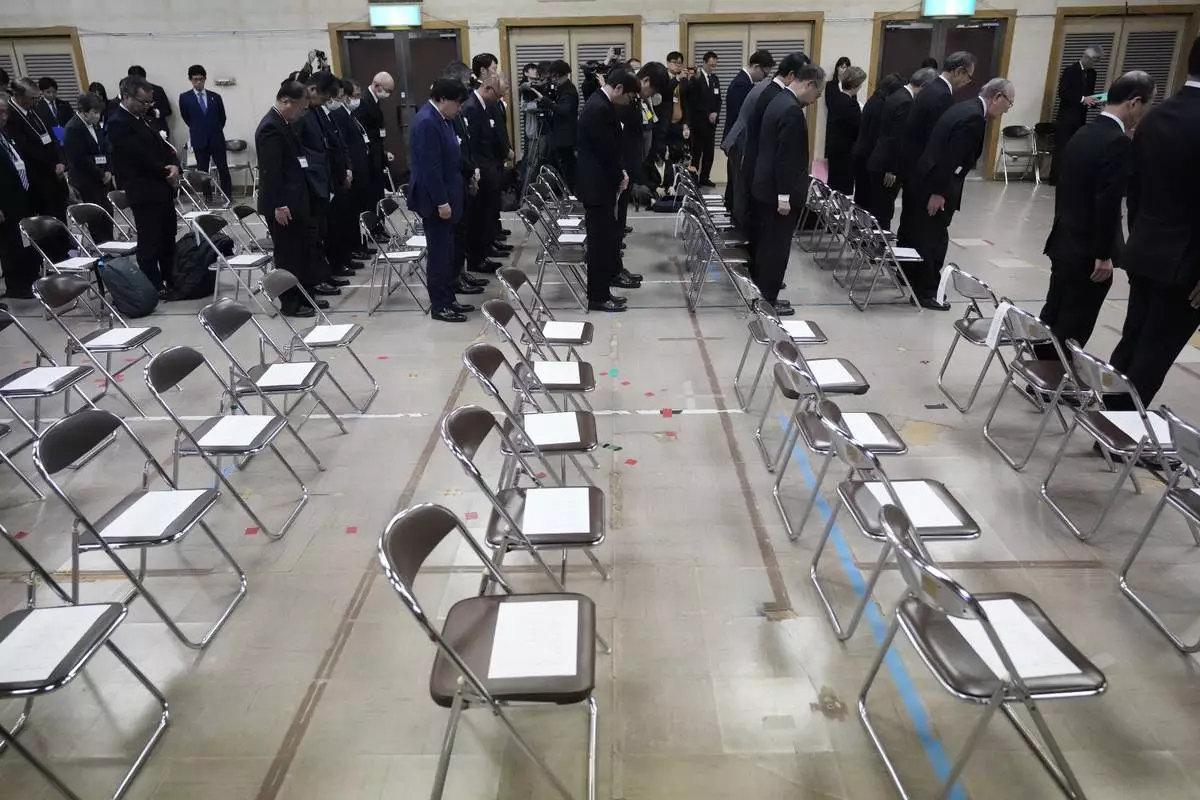
Guests offer a moment of silence during a memorial ceremony for the Sado Island Gold Mine in Sado, Niigata prefecture, Japan, as several seats reserved for South Korean guests remained empty Sunday, Nov. 24, 2024. (AP Photo/Eugene Hoshiko)
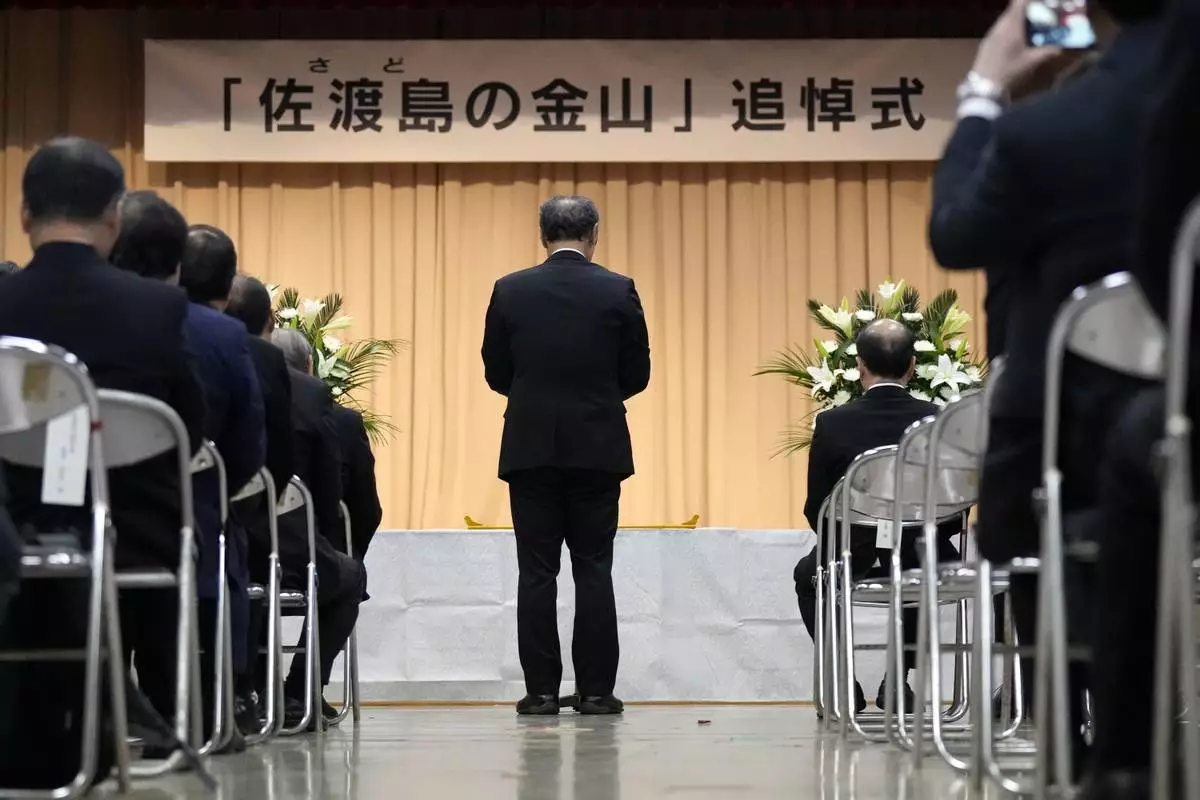
Mayor of Sado City Ryugo Watanabe delivers a speech during a memorial ceremony for the Sado Island Gold Mine in Sado, Niigata prefecture, Japan, Sunday, Nov. 24, 2024. (AP Photo/Eugene Hoshiko)
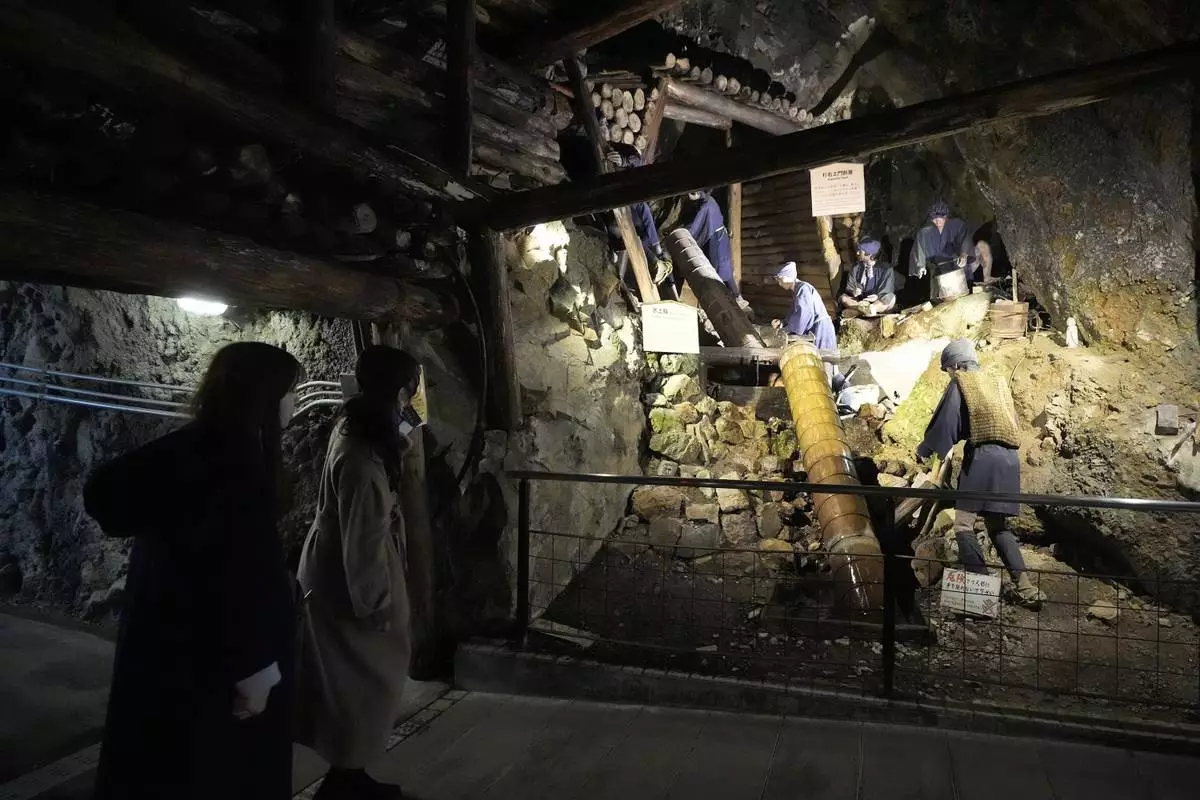
Visitors look at display at Sado Kinzan Gold Mine historic site in Sado, Niigata prefecture, Japan, Saturday, Nov. 23, 2024. (AP Photo/Eugene Hoshiko)






